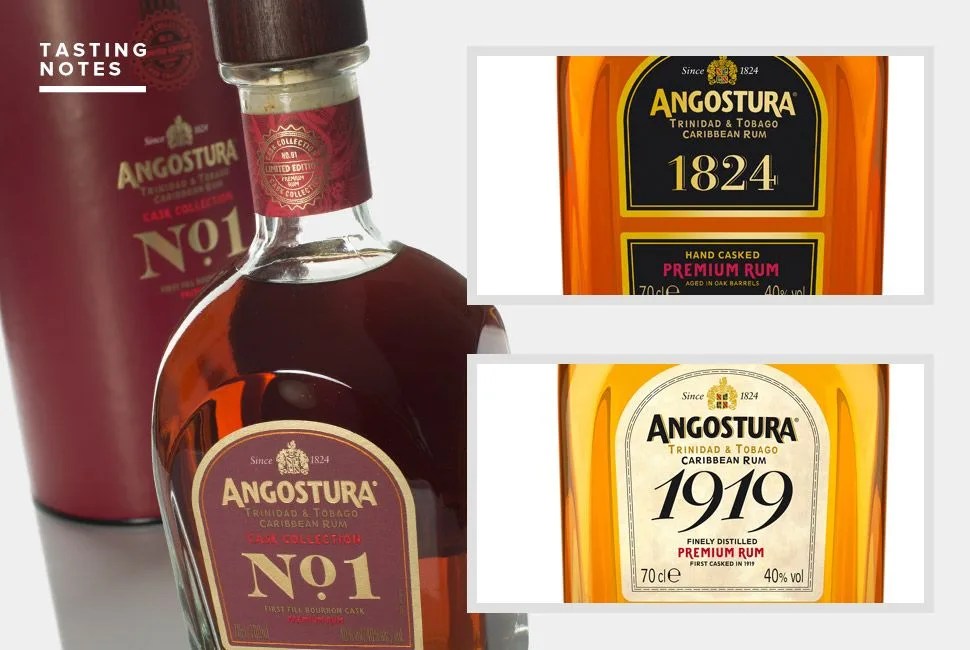In 1824, Dr. Johann Siegert started producing aromatic bitters in Angostura, Venezuela. Although developed as a health tonic — Dr. Siegert was Surgeon General to the armies of Simon Bolivar — they quickly became a key ingredient in many varieties of a popular new drink known as the “cock-tail”. Almost two centuries later, Dr. Siegert’s recipe is the bestselling product of the House of Angostura, the best-known producer of bitters in the world. No longer a medicine, they’re used in everything from Manhattans to Mojitos.
Review: Laphroaig Triple Wood | Review: Knob Creek Smoked Maple Bourbon | Review: Johnny Walker Platinum Label
With all the press given to Angostura’s bitters, it’s easy to overlook their line of rums. In fact, rums in general have been overlooked of late. But as Angostura Master Distiller John George pointed out during a recent tasting, the art of making rum — and rum itself — carries the same complexity as other drinks like Scotch. Although almost all rums use the same three ingredients — sugar cane, water, and yeast — and the same four production steps — fermentation, distillation, aging, and blending — there’s room within the steps and ingredients for almost endless variations in flavors. For instance, using cane sugar as a base ingredient results in rums with a floral character; using molasses yields a fruitier, cleaner spirit. Continuous distillation yields diacetyl, which gives the rum a buttery note; in St. Lucia and Barbados, the rums contain propanol, which gives them an oily texture.
Though Angostura has been making rum for over 100 years, they’ve only recently started pushing to take the drink from the beach to the boardroom. We had a chance to try the three rums in Angostura’s premium line — rums for sipping. Angostura 1824 is a 12-year-old blend of rums hand-picked by the master blender. It’s the perfect rum to sip neat while smoking a cigar or eating a meal of smoked trout. On the nose, one gets hints of honey and dried fruit followed by oak; an intense set of flavors including dark fruit, leather and tobacco aggressively fill the palate.
The second rum we tried, Angostura 1919, is largely defined by its creation story. In 1932, a fire broke out in a Trinidadian government warehouse, scorching several barrels of rum. They were bought by J.B. Fernandes, owner of Fernandes Distillery Limited (acquired by Angostura), who discovered that they had actually been filled in 1919. Angostura pays homage to Fernandes with 1919, a golden rum with aromas of cocoa, caramel, and vanilla. The softest of Angostura’s premium line, the well-blended eight-year-aged rum tastes of vanilla and coconut before opening up to toasty, baked flavors.
Finally, we tried Angostura No. 1, which will hit shelves in January 2014, though only 2,400 bottles will be available in the U.S., and 9,600 worldwide. However, despite the scarcity, the rum is reasonably priced. Made for sipping, the No. 1 contains a combination of eight to ten year old rums that are then placed in First Fill Bourbon Casks. The resulting product showcases the classic rum profile: tobacco, leather and oak on the nose and much of the same, along with caramel, on the tongue.
Of course, for your next beach-themed get together, Angostura makes Reserva, Angostura Aged 5 Years and Angostura Aged 7 Years. But for those who prefer quiet relaxation to a night at Señor Frogs, Angostura 1824, 1919 and No. 1 make great warm-weather alternatives to whiskey.
